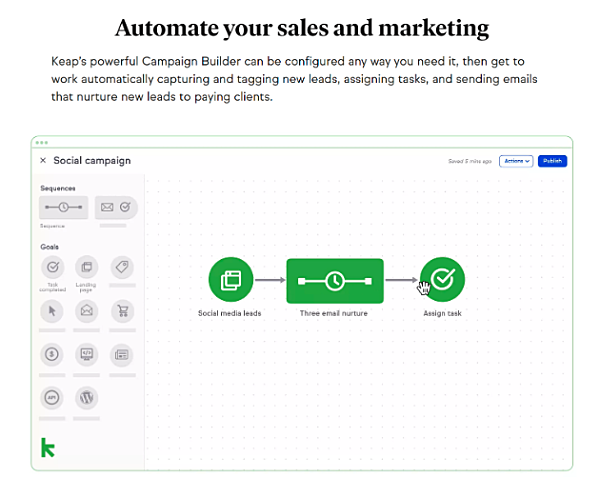Do you know how well your sales team is performing?
Do you actively measure and work toward lowering your customers’ acquisition cost?
Let’s face it: Having a great product or service is one thing, but being able to successfully market and sell it is quite another.
Sales is what drives your business and it’s crucial that you track and measure the right metrics to know how your company is doing. Each sales process is different, but there are universal key performance indicators (KPIs) that allow you to assess the performance of different aspects of it.
In this blog, we'll explore seven crucial sales KPIs that every team should pay attention to.
Why you need to set up sales KPIs
As mentioned, setting up KPIs for your sales process can help you assess your business’s performance.
Having gathered the right data, you can then start improving your process and the aspects of it which aren’t optimized.This is also important in terms of strategizing for the future and forecasting your company’s growth.
The key is to select the right KPIs, as measuring the wrong metrics can turn out quite costly for your business.
💲 Spread the word about Keap and earn cash💲 Yes, it's really that easy! https://t.co/6EFESYWkWF pic.twitter.com/8sI5iayQtZ
— Keap (@KeapGrowing) June 8, 2020
Sales KPIs to track and measure
Depending on the type of business you're running and your budget, your KPIs should reflect the performance and progress of your most important sales processes. Some industries have very long sales cycles, while others have pretty short cycles that are easy to monitor.
Ultimately, the goal of all businessess is to get a prospect to complete a purchase and convert into a paying customer—ideally, a loyal one that will either come back or recommend your product or service to their network.
Below I’ve outlined a few universal KPIs that your sales team should be tracking:
1. Number of new opportunities/leads
The first metric to keep an eye on is the number of new opportunities or leads that you're acquiring. This relates to people who enter the top of your sales funnel and express interest in your product or service. Leads are all those who have decided to join your email list and allowed you to contact them.
For example, SaaS sales process often begins on the company blog—new prospects are coming either organically or from paid ads, land on the blog and convert into email subscribers.
Even though acquiring leads does not guarantee that they'll become customers, monitoring this metric makes for a good indicator of future sales.
For example, this is how Tidio is tracking its traffic to lead conversion for their article on how to make a chatbot , which is bringing them a lot of organic traffic.
From all organic traffic coming to this article, Tidio measures how many of the readers have converted into leads by creating a project—signing up for a trial.

Based on this, it knows whether its article’s copy is good enough for people to take action after reading it.
Apart from measuring the number of new leads, it’s also helpful to keep track of the lead acquisition cost—how much does it cost to acquire a single lead.
2. Leads conversion rate
Next, you should be tracking how many of your leads are converting into paying customers.
Here again, depending on your sales cycle, the lead conversion will be closely correlated with your lead nurturing process (for example done via email marketing).
It's a great indicator that allows you to identify and remove roadblocks that your prospects might be dealing with on their buyer journey.
Leads conversion rate can help you answer the following questions:
- Are the leads you acquired qualified?
- Is your lead nurturing process effective?
- At what point did your leads leave your funnel?
- What are the roadblocks in their buyer journey?
Pro tip: The best way to ensure that your sales targets are hit is to focus on attracting and converting qualified leads. Try free tools such as SurveyAnyplace or Leadquizzes to design forms that help you qualify your leads.
3. Customer acquisition cost
How much does it cost to acquire a single customer?
This is the question that your sales team should be able to answer without hesitation. Measuring the CAC—customer acquisition cost—is a great way to also assess the performance of your sales reps individually.
CAC can depend on many factors including the acquisition channel, lead nurturing process and even the skills of your sales team. Of course, your goal here is to lower your CAC as much as possible.
This metric is great in helping businesses decide what are the best channels for bringing more customers. For example, Instagram or Pinterest can work great for ecommerce, while a company’s blog or cold emails outreach are most effective for SaaS companies.
4. Customer lifetime value
This metric answers the question: how much is each of your customers worth?
LTV is what determines how much revenue you can expect to get from every client your business acquires. Without knowing how much profit your customers bring, it’s difficult to decide how much you should spend on trying to acquire them (CAC).
Ideally, your sales team is constantly working toward increasing the LTV. A customer that bought once is likely to buy again. This is why it’s so crucial to focus on retaining and nurturing your existing client base—so that they purchase again.
Customer lifetime value varies from business to business and there are a few methods used to calculate it. This metric is useful in determining which customer segments are most profitable so that you can focus on attracting them.
5. Churn rate
On one hand, you should be focused on acquiring new customers, but on the other, it’s important to retain the existing ones.
This is where measuring a metric called "churn rate" comes in handy, as it shows how many of your customers decide to give up your service or return your products.
It’s crucial that you keep your churn rate as low as possible. One way to do that is by investing into the lead nurturing process, usually by educating your prospects before they decide to make a purchase.
For example, this can be done by blogging about your products or services—explaining how to use them and showing off their benefits. Educating your leads and your existing customers is a great way to reduce churn.
6. Net promoter score
Another crucial metric is the net promoter score (NPS), which is a metric showing how likely customers are to recommend your product/service.
NPS is measured on a scale from 0-10 and it's calculated solely based on the data gathered from the existing customers.
Here’s how the NPS ranking looks:
Promoters (9-10) - These people are really fond of your business. This is the group of people that you want to keep nurturing as they are loyal to your brand and are happy to advocate for you.
Passives (7-8) - People who liked your product or service and were satisfied with it, but won’t do much to help you promote it across their network.
Detractors (0-6) - These people were not happy with what they purchased from you. It’s possible that they will leave negative reviews and encourage others to avoid your brand.
7. Customer engagement rate
The rate at which your existing customers (and your leads) are engaging with your brand is a good indicator that helps you to forecast for the future.
A few smaller metrics that your team could pay attention to are email open and response rate, webinar attendance or social media engagement under your posts.
There are multiple strategies that can be undertaken to increase the customer engagement rate. They mostly include producing educational content that's nurturing your audience and familiarizing it with your products or services.
This can be distributed either via social media or email marketing. To measure the effectiveness of the latter channel without stretching your budget, you might want to use simple tools like link shortener that automatically tracks email open rates.
Track and measure your sales KPIs
It’s nearly impossible to track all of your sales KPIs without having the right technology in place. There are plenty of tools that can help your team monitor where it is hitting its target goals.
It's a good idea to set up a sales KPIs dashboard to track your team’s progress and assess the performance of individual sales reps.
If you're looking for an all-in-one tool to help you set up and monitor your sales process, try Keap—a CRM and sales and marketing automation software.

With Keap you're able to keep all of your data in one place and manage your processes hassle-free. It’s a great solution for small businesses looking to scale. Keap's main features include:
- CRM
- Messaging automation
- Appointments schedule
- Customized data dashboards
- Email marketing automation
- Invoices and payments
- Reporting
Final thoughts
All in all, tracking and measuring sales KPIs will help you strategize. Here’s what digital marketing expert Lilach Bullock has to say about this topic:
"Monitoring and measuring your sales KPIs is crucial and should never be overlooked—this is how you keep growing and evolving. Leverage your sales KPIs to understand what’s working and what isn’t so that you can improve your sales strategy and generate better results, quarter by quarter."
There are smaller metrics that you should keep your eye on, however the seven detailed above are the ones that best indicate whether your business is performing well.
Also, if you're just at the start of your journey, consider investing into sales training or courses to learn how your sales process should be built.
Before you go ...

SEE HOW YOU RANK: Take Keap's Lifecycle Automation Self Assessment and compare your business against the industry’s top performers with our proven formula and instantly reveal the strengths and gaps of your business.


